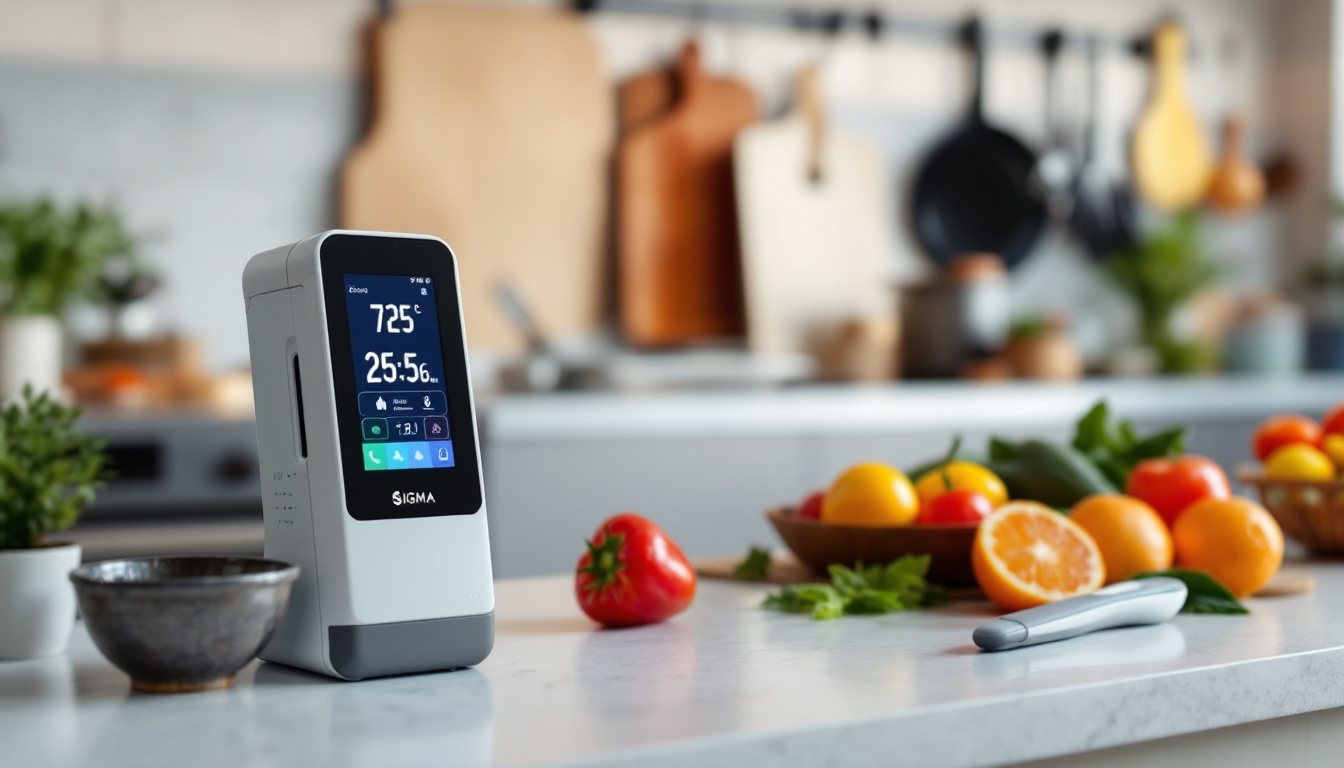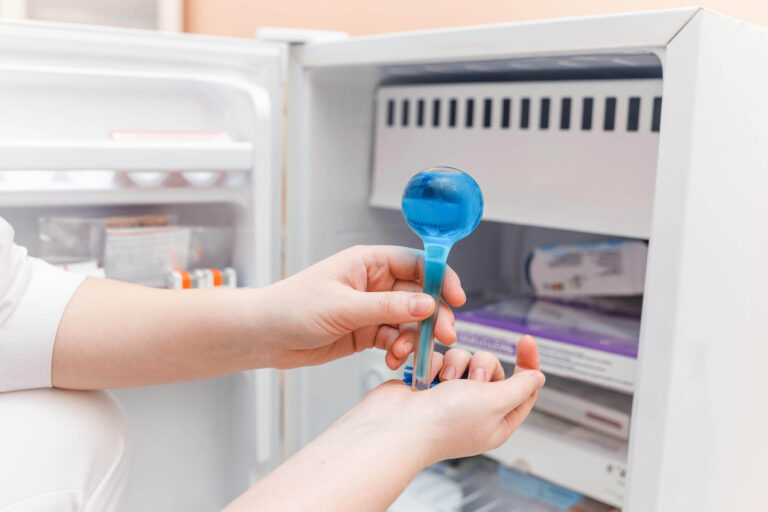In the fast-paced world of food businesses, maintaining optimal temperature conditions is crucial for ensuring food safety and quality. Wireless temperature monitoring systems have emerged as a game-changer, providing a reliable solution for businesses to monitor temperature fluctuations in real-time. This article explores the numerous benefits of implementing such systems in food-related enterprises.
Enhanced Food Safety
One of the primary advantages of wireless temperature monitoring systems is the significant enhancement of food safety. With the increasing prevalence of foodborne illnesses, businesses must take proactive measures to protect their customers. These systems provide continuous monitoring, ensuring that food is stored and transported at safe temperatures. The importance of maintaining the cold chain cannot be overstated, as even minor fluctuations in temperature can lead to the rapid growth of harmful bacteria, which poses a serious risk to consumer health. By implementing these advanced monitoring solutions, establishments can not only safeguard their patrons but also enhance their reputation as reliable providers of safe food.
Wireless temperature monitoring systems offer a multitude of benefits for food businesses, ranging from enhanced food safety and cost-effectiveness to improved operational efficiency and customer trust. As the food industry continues to evolve, embracing technology that ensures the safety and quality of products is essential.

Real-Time Alerts
Wireless temperature monitoring systems are equipped with sensors that continuously track temperature levels. In the event of a temperature deviation, these systems send immediate alerts to designated personnel via SMS or email. This rapid notification allows businesses to take swift action, preventing potential spoilage and safeguarding public health. Moreover, the integration of mobile applications with these systems enables managers to monitor conditions remotely, providing peace of mind even when they are away from the premises. This capability is particularly beneficial during peak hours or in large operations where multiple locations must be monitored simultaneously, ensuring that every aspect of food safety is under constant surveillance.
Compliance with Regulations
Food businesses are subject to stringent regulations regarding food safety. Wireless temperature monitoring systems help ensure compliance with these regulations by providing accurate and reliable temperature data. This data can be easily accessed and documented, making it simpler to demonstrate adherence to safety standards during inspections. Furthermore, many systems offer automated reporting features that compile historical data, allowing businesses to analyse trends over time. This not only aids in maintaining compliance but also helps in identifying areas for improvement within the food storage and handling processes. By leveraging technology in this way, businesses can foster a culture of safety that not only meets regulatory requirements but also prioritises the well-being of their customers.
Cost-Effectiveness
Investing in wireless temperature monitoring systems can lead to significant cost savings for food businesses. By preventing spoilage and waste, these systems contribute to improved profit margins. The initial investment in such technology is often outweighed by the long-term benefits it provides. Furthermore, the integration of these systems can streamline operations, allowing staff to focus on other critical areas of the business, thereby enhancing overall productivity and efficiency.
Reduction in Food Waste
Food waste is a major concern for businesses in the food industry. By continuously monitoring temperature levels, businesses can identify issues before they escalate, thus reducing the likelihood of spoiled products. This not only saves money but also contributes to more sustainable practices within the industry. In fact, studies have shown that businesses employing such monitoring systems can reduce their food waste by up to 30%, which not only alleviates financial burdens but also plays a crucial role in addressing the global issue of food scarcity. Learn more about sustainable at https://journals.uol.edu.pk/medicaleducator/article/view/2569
Optimised Energy Usage
Wireless temperature monitoring systems can also help businesses optimise their energy consumption. By ensuring that refrigeration units are operating efficiently, businesses can reduce energy costs. This not only benefits the bottom line but also aligns with environmentally friendly practices, appealing to a growing demographic of eco-conscious consumers. Moreover, the data collected from these systems can provide valuable insights into energy usage patterns, enabling businesses to make informed decisions about equipment upgrades or modifications that further enhance energy efficiency. As energy prices continue to rise, such proactive measures can safeguard against unexpected costs and contribute to a more sustainable operational model.

Improved Operational Efficiency
Operational efficiency is vital for the success of any food business. Wireless temperature monitoring systems streamline processes and reduce the burden on staff, allowing them to focus on other critical tasks. In an industry where compliance with health and safety regulations is paramount, these systems not only enhance productivity but also ensure that food safety standards are consistently met, thereby safeguarding both the business and its customers.
Automation of Monitoring Processes
Manual temperature checks can be time-consuming and prone to human error. Wireless systems automate this process, providing continuous monitoring without the need for constant manual checks. This automation frees up staff to concentrate on customer service and other essential operations, ultimately enhancing overall productivity. Furthermore, the instant alerts generated by these systems in the event of temperature fluctuations allow for immediate corrective actions, minimising the risk of spoilage and waste, which can be particularly detrimental in a competitive market.
Data Analytics for Better Decision-Making
Many wireless temperature monitoring systems come equipped with data analytics tools that provide insights into temperature trends over time. This data can be invaluable for making informed decisions regarding inventory management, equipment maintenance, and operational adjustments. By leveraging this information, businesses can optimise their processes and improve overall performance. Additionally, the ability to analyse historical data can help identify patterns that may indicate potential equipment failures or inefficiencies, allowing for proactive maintenance and reducing the likelihood of unexpected downtimes. This strategic approach not only saves costs but also enhances the reliability of the service provided to customers, fostering trust and loyalty.
Scalability and Flexibility
As food businesses grow, their monitoring needs may change. Wireless temperature monitoring systems offer scalability and flexibility, making them suitable for businesses of all sizes.
Customisable Solutions
Wireless systems can be tailored to meet the specific needs of a business. Whether a small café or a large food distribution centre, these systems can be customised to monitor various environments, from refrigerators to freezers and even transport vehicles. This adaptability ensures that businesses can maintain optimal conditions as they expand.
Remote Monitoring Capabilities
One of the standout features of wireless temperature monitoring systems is their remote monitoring capabilities. Business owners and managers can access real-time data from anywhere, allowing them to stay informed even when they are not on-site. This flexibility is particularly beneficial for multi-location operations, where oversight can become increasingly complex. To read more about flexibility click here.
Enhanced Customer Trust
In an era where consumers are increasingly concerned about food safety and quality, implementing wireless temperature monitoring systems can significantly enhance customer trust. By demonstrating a commitment to safety and quality, businesses can foster loyalty and attract new customers.
Transparency in Operations
Many consumers appreciate transparency in food sourcing and handling. By utilising wireless temperature monitoring systems, businesses can provide evidence of their commitment to food safety. This transparency can be communicated through marketing materials, social media, or even in-store displays, reassuring customers that their health is a top priority.
Building a Strong Reputation
A strong reputation is invaluable in the food industry. Businesses that prioritise food safety and quality are more likely to receive positive reviews and recommendations. By implementing wireless temperature monitoring systems, companies can build a reputation for reliability and excellence, setting themselves apart from competitors.
Integration with Existing Systems
Wireless temperature monitoring systems can easily integrate with other technologies already in use within food businesses. This compatibility can enhance overall operational efficiency and streamline processes.
Seamless Integration with Inventory Management
Many businesses utilise inventory management systems to track stock levels and manage orders. Wireless temperature monitoring systems can be integrated with these systems, providing real-time data that informs inventory decisions. For example, if a temperature issue arises, businesses can quickly adjust their inventory levels to prevent spoilage.
Compatibility with Other Monitoring Technologies
In addition to inventory management, wireless temperature monitoring systems can work alongside other monitoring technologies, such as humidity sensors and air quality monitors. This comprehensive approach allows businesses to maintain optimal conditions across various parameters, ensuring the highest quality standards are met.
Conclusion
By investing in wireless temperature monitoring systems, food businesses can not only protect their customers but also optimise their operations and build a strong reputation in the market. The integration of such systems is not merely a trend but a necessary step towards a safer and more efficient future in the food industry.
Ultimately, the implementation of wireless temperature monitoring systems is a strategic decision that can lead to long-term success for food businesses, ensuring they remain competitive in an ever-changing landscape.


